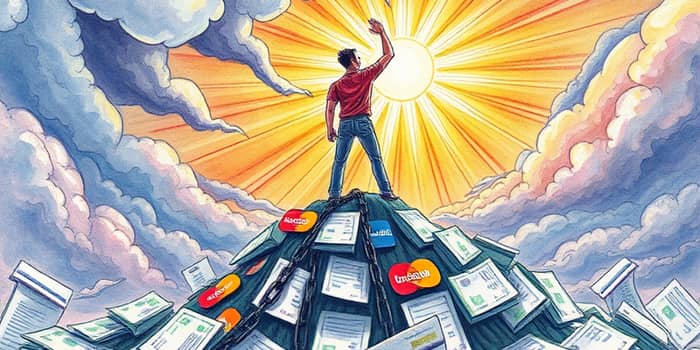
In 2025, American households face record-high credit card debt, with totals soaring past $1.18 trillion according to the New York Federal Reserve [7]. Rising living costs, high APRs near 29.99%, and widespread use of only minimum payments have created a crippling cycle of interest that traps nearly half of cardholders carrying balances month after month [5]. This article explores why the debt crisis has worsened, and offers practical, expert-backed strategies to regain control and achieve financial freedom.
Credit cards can provide convenience, rewards, and a pathway to building credit, but high-interest credit card traps can turn these advantages into burdens. Most issuers require a minimum payment of about 2% of the balance, making a small dent in principal. At a 29.99% APR, a $5,000 balance with only minimum payments can take over 30 years to eliminate, costing more than double the original debt in interest [6].
Delinquency rates remain elevated at 3.05% for accounts 30+ days overdue [3], a reminder that the stress of unpaid debts affects both credit scores and mental well-being. To break free, it’s essential to understand the mechanics of compounding interest and adopt a structured repayment plan beyond simply mailing the minimum due.
Experts recommend choosing a method that aligns with your financial situation and personality. Below are four proven strategies, each designed to accelerate payoff and reduce overall costs. Additional tactics and behavioral insights are also included to ensure long-term success.
The most cost-effective payoff approach focuses on eliminating the highest-interest balances first. Follow these steps:
By prioritizing interest savings, you minimize the total amount paid and often achieve a faster overall payoff [4]. This method is ideal for those who can stay disciplined without immediate wins.
For many, motivation is the fuel to stay on track. The debt snowball delivers quick psychological wins by attacking the smallest balances first. Here's how:
Though you may pay slightly more interest, the momentum from early victories often outweighs the extra cost, especially for those battling debt fatigue [2][8].
Simplify payments and potentially lower rates by consolidating multiple debts into one account. Options include:
This strategy simplifies your payment process and can accelerate payoff if managed responsibly. Be cautious of fees, impact on your credit score, and the temptation to rack up new balances on cleared cards.
Beyond primary strategies, consider these complementary actions:
Consistency and realistic planning are vital. Follow these steps to refine your approach:
Leverage technology and professional guidance:
Debt repayment is as much mental as financial. Recognize small victories, track progress visually, and lean on support networks—friends, family, or online communities. Regularly review your budget and celebrate milestones, whether it’s your first paid-off card or trimming your interest costs significantly. Adhering to your plan fosters a sense of control and builds lasting money-management habits.
With credit card debt at all-time highs—averaging $7,321 per holder carrying balances [3]—the need for effective strategies has never been greater. Choosing the right method—be it avalanche, snowball, consolidation, or a hybrid approach—paired with disciplined budgeting and behavioral reinforcement can transform a longtime financial burden into a decisive path toward freedom. Start today, commit wholeheartedly, and watch as each payment brings you closer to a debt-free future filled with peace of mind and renewed opportunity.
References













